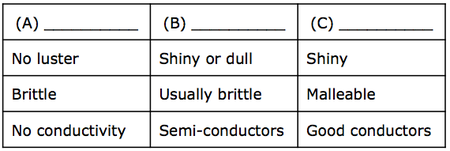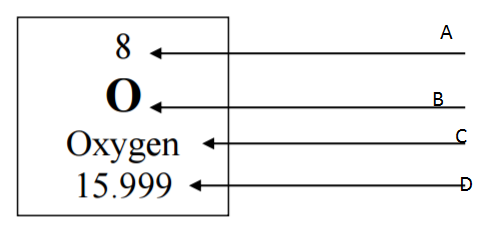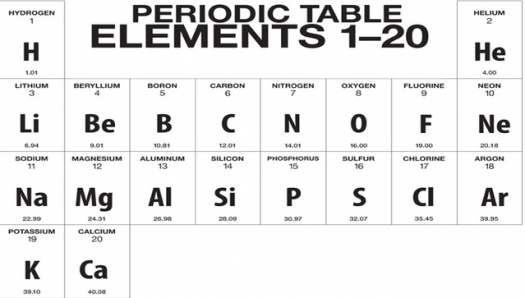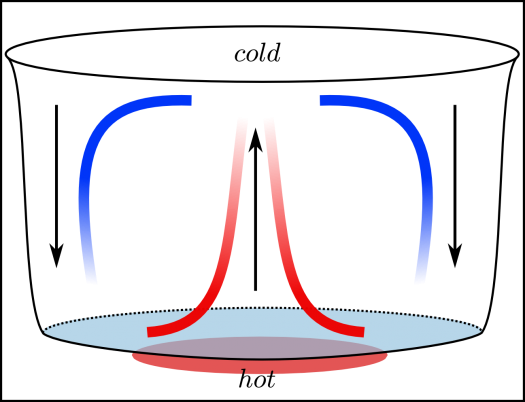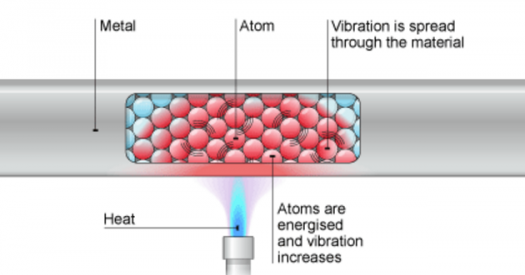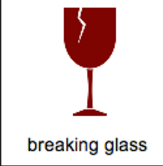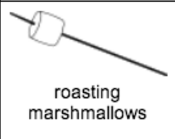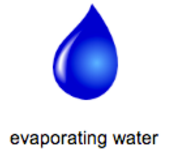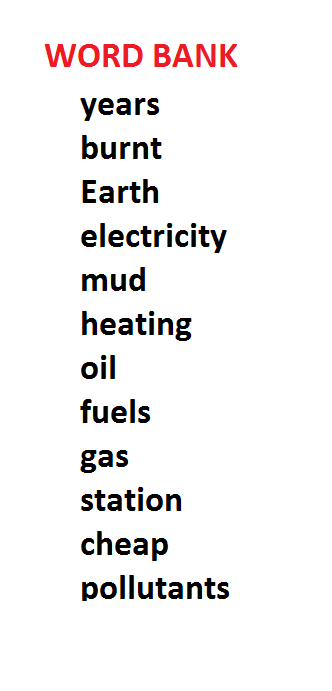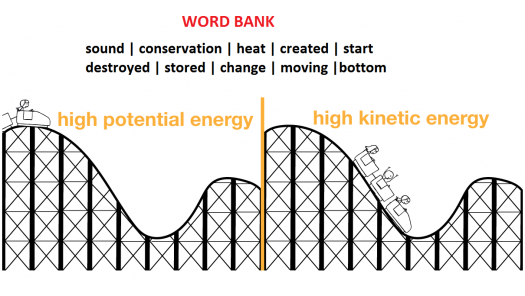8sw2 Yearly Science Exam
-
The particle of an atom with a positive charge is known as the:
-
Neutron
-
Proton
-
Electron
-
Particle
-
The '8SW2 YEARLY SCIENCE EXAM' assesses understanding of basic atomic structure, characteristics of metals and non-metals, and atomic number identification. It's designed to test key concepts in physics and chemistry, enhancing student readiness for advanced scientific studies.
(350).webp)
- 2.
The particles that move around the nucleus of an atom are called:
-
Neutrons
-
Protons
-
Electrons
-
Ions
Correct Answer
A. ElectronsExplanation
Electrons are the particles that move around the nucleus of an atom. They have a negative charge and are much smaller than protons and neutrons. Electrons are responsible for the chemical behavior of atoms, as they participate in chemical reactions and determine the atom's bonding properties.Rate this question:
-
- 3.
All atoms are made up of what 3 basic components?
-
Nucleus, protons and electrons
-
Ions, protons and electrons
-
Electrons, protons and neutrons
-
Elements, compounds and mixtures
Correct Answer
A. Electrons, protons and neutronsExplanation
The three basic components of all atoms are electrons, protons, and neutrons. Electrons are negatively charged particles that orbit the nucleus of an atom. Protons are positively charged particles found in the nucleus, and neutrons are neutral particles also located in the nucleus. These three components together make up the structure of an atom.Rate this question:
-
- 4.
In the table shown which letter best describes the characteristics of a metal?
-
A
-
B
-
C
Correct Answer
A. C -
- 5.
In the table shown which letter best describes the characteristics of a non-metal?
-
A
-
B
-
C
Correct Answer
A. AExplanation
A non-metal is typically characterized by properties such as low conductivity of heat and electricity, brittleness, and dull appearance. Since the question asks for the letter that best describes these characteristics, the correct answer would be A, as it is most likely associated with these properties.Rate this question:
-
- 6.
In the picture shown, what is represented by line A?
-
Atomic number
-
Atomic mass
-
Number of protons
-
The group number
Correct Answer
A. Atomic numberExplanation
Line A in the picture represents the atomic number. The atomic number of an element is the number of protons in the nucleus of an atom. It is a unique identifier for each element and determines its position on the periodic table. The atomic number provides important information about the element's properties and its placement within the periodic table.Rate this question:
-
- 7.
In the picture shown, which line represents the symbol for the element?
-
B
-
A
-
C
-
D
Correct Answer
A. BExplanation
The correct answer is B because it is the only line that represents the symbol for the element. The other lines (A, C, and D) do not resemble any known element symbols.Rate this question:
-
- 8.
An element be broken down into a simpler substance
-
True
-
False
Correct Answer
A. FalseExplanation
This statement is incorrect because an element cannot be broken down into a simpler substance. Elements are the most basic form of matter and cannot be further broken down into simpler substances by ordinary chemical means. They are composed of only one type of atom and retain their unique properties.Rate this question:
-
- 9.
In the picture shown, what does the box labelled A represent?
-
Pure Element –only one typeof atom present
-
Mixture of two elements –two types of uncombined atoms present.
-
Pure compound –only one type of compound present
-
Mixture of two compounds –two types of compounds present
-
Mixture of a compound and an element.
Correct Answer
A. Mixture of two compounds –two types of compounds presentExplanation
The box labelled A represents a mixture of two compounds, as indicated by the presence of two types of compounds.Rate this question:
-
- 10.
In the picture shown, what does the box labelled B represent?
-
Pure Element –only one typeof atom present
-
Mixture of two elements –two types of uncombined atoms present.
-
Pure compound –only one type of compound present
-
Mixture of two compounds –two types of compounds present
-
Mixture of a compound and an element.
Correct Answer
A. Pure compound –only one type of compound presentExplanation
The box labelled B represents a pure compound because it contains only one type of compound. A pure compound is a substance that is made up of two or more different elements chemically combined in a fixed ratio. In this case, the box B only contains one type of compound, indicating that it is a pure compound.Rate this question:
-
- 11.
In the picture shown, what does the box labelled C represent?
-
Pure Element –only one typeof atom present
-
Mixture of two elements –two types of uncombined atoms present.
-
Pure compound –only one type of compound present
-
Mixture of two compounds –two types of compounds present
-
Mixture of a compound and an element.
Correct Answer
A. Pure Element –only one typeof atom presentExplanation
The box labelled C represents a pure element because it contains only one type of atom.Rate this question:
-
- 12.
The chemical formula for the compound salt is NaCl. Salt contains the elements:(hint = use the picture shown)
-
Sodium and carbon
-
Sodium and chlorine
-
Chlorine and nitrogen
-
Nitrogen and carbon
Correct Answer
A. Sodium and chlorineExplanation
The chemical formula for salt is NaCl, indicating that it is composed of sodium (Na) and chlorine (Cl) atoms. Sodium is a highly reactive metal, while chlorine is a non-metal. When combined, they form an ionic bond, resulting in the formation of salt.Rate this question:
-
- 13.
Most of the worlds electricity comes from the burning of:
-
Alcohol
-
Coal
-
Oil
-
Natural gas
Correct Answer
A. CoalExplanation
Coal is the correct answer because it is one of the most widely used sources of electricity generation worldwide. Coal-fired power plants burn coal to produce steam, which is then used to turn turbines and generate electricity. Despite its negative environmental impact, coal remains a significant contributor to global electricity production due to its abundance and relatively low cost compared to other sources such as oil, natural gas, and alcohol.Rate this question:
-
- 14.
Coal stores energy. The energy originally came from:
-
The Earth
-
The sun
-
Chemicals
-
Rocks
Correct Answer
A. The sunExplanation
Coal is formed from the remains of plants that lived millions of years ago. These plants absorbed energy from the sun through photosynthesis and converted it into chemical energy, which was stored in their tissues. Over time, these plants were buried and subjected to heat and pressure, which transformed them into coal. Therefore, the energy stored in coal originally came from the sun.Rate this question:
-
- 15.
A natural fuel formed in the geological past from the remains of living organisms is known as:
-
A fossil fuel
-
Solar energy
-
Geothermal
-
Biomass
Correct Answer
A. A fossil fuelExplanation
A natural fuel formed in the geological past from the remains of living organisms is known as a fossil fuel. Fossil fuels, such as coal, oil, and natural gas, are derived from ancient organic matter that has undergone decomposition and chemical changes over millions of years. These fuels are non-renewable resources and are widely used for energy production due to their high energy content.Rate this question:
-
- 16.
Which of these resources is non-renewable?
-
Natural gas
-
Wind
-
Solar energy
-
Hydroelectricity
Correct Answer
A. Natural gasExplanation
Natural gas is considered a non-renewable resource because it is formed from the remains of plants and animals that lived millions of years ago. It takes a long time for natural gas to form, and once it is extracted and used, it cannot be easily replenished. This makes it finite and non-renewable compared to resources like wind, solar energy, and hydroelectricity, which are considered renewable as they can be naturally replenished over a relatively short period of time.Rate this question:
-
- 17.
Plants obtain the energy to make food from:
-
Water
-
Air
-
Soil
-
The sun
Correct Answer
A. The sunExplanation
Plants obtain the energy to make food from the sun through a process called photosynthesis. During photosynthesis, plants use sunlight to convert carbon dioxide and water into glucose and oxygen. This glucose serves as the primary source of energy for the plant, allowing it to carry out various metabolic processes. Therefore, the sun is crucial for plants' survival and growth as it provides the energy necessary for them to produce food.Rate this question:
-
- 18.
Which of the following is a fossil fuel?
-
Oil
-
Iron ore
-
Solar energy
-
Hydrogen
Correct Answer
A. OilExplanation
Oil is a fossil fuel because it is formed from the remains of ancient plants and animals that were buried and subjected to heat and pressure over millions of years. This process transformed the organic material into hydrocarbons, which make up crude oil. Fossil fuels are non-renewable resources and are used extensively for energy production and transportation. Iron ore, solar energy, and hydrogen are not fossil fuels.Rate this question:
-
- 19.
Which of the following is NOT a chemical change?
-
Burning a match
-
Dissolving sugar in tea
-
Ripening of a banana
-
Cooking a cake
Correct Answer
A. Dissolving sugar in teaExplanation
Dissolving sugar in tea is not a chemical change because it is a physical change. In this process, the sugar molecules are simply being dispersed in the tea, forming a homogeneous mixture. No new substances are formed, and the sugar can be easily separated from the tea by evaporation. On the other hand, burning a match, ripening of a banana, and cooking a cake all involve chemical reactions where new substances are formed.Rate this question:
-
- 20.
Potential Energy (PE) is:
-
The energy caused by the movement of an object
-
Energy that is stored (like compressed springs)
-
The energy that is used when a light is switched on
-
The energy released when a runner gets hot
Correct Answer
A. Energy that is stored (like compressed springs)Explanation
Potential energy is the energy that is stored in an object due to its position or state. It is not caused by the movement of an object, as stated in the first option. The second option correctly describes potential energy as energy that is stored, such as in compressed springs. The third and fourth options are incorrect because they do not describe potential energy.Rate this question:
-
- 21.
Batteries are stores of:
-
Electrical energy
-
Chemical energy
-
Kinetic energy
-
Acidic energy
Correct Answer
A. Chemical energyExplanation
Batteries are stores of chemical energy. This is because batteries convert chemical energy into electrical energy through a chemical reaction. Inside a battery, there are two electrodes (usually made of different metals) immersed in an electrolyte solution. The chemical reaction between the electrodes and the electrolyte generates a flow of electrons, creating an electrical current. Therefore, batteries rely on the chemical reactions happening within them to store and release energy in the form of electricity.Rate this question:
-
- 22.
Food is a source of:
-
Electrical energy
-
Chemical energy
-
Kinetic energy
-
Thermal energy
Correct Answer
A. Chemical energyExplanation
Food is a source of chemical energy because it contains molecules that can be broken down through chemical reactions, such as digestion, to release energy. This energy is stored in the form of chemical bonds within the molecules of food. When these bonds are broken, energy is released and can be used by the body for various functions such as movement, growth, and maintenance of body temperature. Therefore, food acts as a source of chemical energy for living organisms.Rate this question:
-
- 23.
This image shows which method of heat transfer:
-
Conduction
-
Convection
-
Radiation
-
Thermal energy
Correct Answer
A. ConvectionExplanation
The image shows convection as the method of heat transfer. Convection occurs when heat is transferred through the movement of fluids, such as liquids or gases. In the image, it is likely that the heat is being transferred through the movement of a fluid, which is characteristic of convection. Conduction refers to the transfer of heat through direct contact, while radiation is the transfer of heat through electromagnetic waves. Thermal energy is a broader term that encompasses all forms of energy associated with heat.Rate this question:
-
- 24.
This image shows which method of heat transfer:
-
Conduction
-
Convection
-
Radiation
-
Thermal energy
Correct Answer
A. ConductionExplanation
The image shows conduction as the method of heat transfer. Conduction is the transfer of heat through direct contact between two objects or substances. In the image, there seems to be a direct contact between two objects or substances, indicating the transfer of heat through conduction.Rate this question:
-
- 25.
In which situation below is heat being transferred mainly by radiation?
-
From a hot clothes iron to your hand held close to it
-
From hot plate on the stove to the soup in the saucepan
-
From a hot car door to your hand placed on the metal
-
From a hot drink to the end of a metal spoon used to stir it
Correct Answer
A. From a hot clothes iron to your hand held close to itExplanation
In the situation where heat is being transferred mainly by radiation, it occurs when a hot clothes iron is held close to your hand. Radiation is the transfer of heat through electromagnetic waves without the need for direct contact between objects. In this case, the heat from the iron is radiating out in the form of infrared waves and directly warming your hand without any physical contact.Rate this question:
-
- 26.
What is the main advantage of wind power?
-
It does not work unless there is wind
-
It is a renewable energy source
-
It uses large turbines
-
In no way does it harm the ecosystem
Correct Answer
A. It is a renewable energy sourceExplanation
The main advantage of wind power is that it is a renewable energy source. Unlike fossil fuels, which are finite and contribute to climate change, wind power harnesses the natural wind currents to generate electricity. This means that as long as there is wind, there will always be a source of energy. Additionally, wind power does not produce greenhouse gas emissions or air pollution, making it a cleaner and more sustainable alternative to traditional energy sources.Rate this question:
-
- 27.
What is the main disadvantage of a coal fired power plant?
-
It is a non-renewable energy source
-
It is a renewable energy source
-
It is cheap
-
It is relatively easy to obtain
Correct Answer
A. It is a non-renewable energy sourceExplanation
The main disadvantage of a coal-fired power plant is that it is a non-renewable energy source. Unlike renewable energy sources such as solar or wind power, coal is a finite resource that takes millions of years to form. Once it is burned, it cannot be replaced, leading to depletion of this energy source over time. This reliance on non-renewable resources contributes to environmental concerns such as air pollution, greenhouse gas emissions, and climate change. Additionally, the extraction and combustion of coal can have detrimental effects on local ecosystems and human health.Rate this question:
-
- 28.
Is the picture shown a physical or chemical change?
-
Physical
-
Chemical
Correct Answer
A. PhysicalExplanation
The picture shown is most likely depicting a physical change. Physical changes involve altering the state or form of a substance without changing its chemical composition. In the absence of any information about the specific changes occurring in the picture, it is reasonable to assume that the change is physical since there is no indication of a chemical reaction taking place.Rate this question:
-
- 29.
Is the picture shown a physical or chemical change?
-
Physical
-
Chemical
Correct Answer
A. ChemicalExplanation
Without the picture, it is difficult to provide a specific explanation. However, if the picture shows a reaction where new substances are formed, such as a color change, the formation of gas, or the release of heat or light, then it is likely a chemical change. Chemical changes involve the breaking and forming of chemical bonds, resulting in the creation of new substances. On the other hand, if the picture shows a change in size, shape, or state of matter without the formation of new substances, it is likely a physical change. Physical changes involve a rearrangement or reorganization of molecules without any alteration in their chemical composition.Rate this question:
-
- 30.
Is the picture shown a physical or chemical change?
-
Physical
-
Chemical
Correct Answer
A. ChemicalExplanation
Based on the information provided, it is not possible to determine the specific reason why the correct answer is "chemical." Without any context or additional details about the picture, it is not possible to analyze the changes happening in the picture and determine whether they are physical or chemical in nature.Rate this question:
-
- 31.
Is the picture shown a physical or chemical change?
-
Physical
-
Chemical
Correct Answer
A. PhysicalExplanation
The picture shown is most likely depicting a physical change. Physical changes involve a change in the appearance or state of a substance without altering its chemical composition. In the absence of any specific details about the picture, it is difficult to provide a precise explanation. However, physical changes can include processes like melting, freezing, or dissolving, where the substance undergoes a transformation in its physical properties but its chemical composition remains the same.Rate this question:
-
- 32.
Fossil fuels began forming millions of ________ ago. At the time when it is believed that dinosaurs roamed the ________ , forests of trees fell into swamps and were covered by silt and ________ . They gradually changed into the coal, ________ and natural ________ that we use today. The advantages of using fossil fuels are that they are readily available at the present time and are ________ . They can also be used for many purposes e.g. coal can be ________ in power stations to make ________ and also in homes for ________ . These fossil ________ took millions of years to form, yet humans are using them rapidly in cars, power ________ the disadvantages of fossil fuels is that they will run out, and also that they are ________ .
Correct Answer
years
Earth
mud
oil
gas
cheap
burnt
electricity
heating
fuels
stations, stations
pollutantsExplanation
Fossil fuels began forming millions of years ago. At the time when it is believed that dinosaurs roamed the Earth, forests of trees fell into swamps and were covered by silt and mud. They gradually changed into the coal, oil and natural gas that we use today. The advantages of using fossil fuels are that they are readily available at the present time and are cheap. They can also be used for many purposes e.g. coal can be burnt in power stations to make electricity and also in homes for heating. These fossil fuels took millions of years to form, yet humans are using them rapidly in cars, power stations, and homes. One of the disadvantages of fossil fuels is that they will run out, and also that they are pollutants.Rate this question:
- 33.
The law of ________ of energy states that energy cannot be ________ or ________, but can only ________ forms. There are many different forms of energy. Potential energy is ________ energy and kinetic energy is the energy of ________. Take for example the motion of a roller coaster on its tracks: at the ________of the loop, the roller coaster has high potential energy. At the ________ of the loop, it has high kinetic energy. If energy is conserved why does the roller coaster eventually slow down and stop at the bottom of the roller? That’s because the force of friction changes the kinetic energy into ________ and ________ energy, especially when the brakes are applied. As the roller coaster moves around the track, its potential and kinetic energy change back and forth.
Correct Answer
conservation
created, destroyed
created, destroyed
change
stored
moving
start
bottom
sound, heat
sound, heatExplanation
The law of conservation of energy states that energy cannot be created or destroyed, but can only change forms. There are many different forms of energy. Potential energy is stored energy and kinetic energy is the energy of motion. Take for example the motion of a roller coaster on its tracks: at the start of the loop, the roller coaster has high potential energy. At the bottom of the loop, it has high kinetic energy. If energy is conserved why does the roller coaster eventually slow down and stop at the bottom of the roller? That’s because the force of friction changes the kinetic energy into sound and heat energy, especially when the brakes are applied. As the roller coaster moves around the track, its potential and kinetic energy change back and forth.Rate this question:
Quiz Review Timeline (Updated): Jan 13, 2025 +
Our quizzes are rigorously reviewed, monitored and continuously updated by our expert board to maintain accuracy, relevance, and timeliness.
-
Current Version
-
Jan 13, 2025Quiz Edited by
ProProfs Editorial Team -
Oct 30, 2016Quiz Created by
Kelsoscience
- Aeronautics Quizzes
- Aerospace Quizzes
- Agricultural Science Quizzes
- Astrology Quizzes
- Astronomy Quizzes
- Atom Quizzes
- Biochemistry Quizzes
- Biology Quizzes
- Biomechanics Quizzes
- Biostatistics Quizzes
- Biotechnology Quizzes
- Botany Quizzes
- Branches Of Science Quizzes
- Chemistry Quizzes
- Cytology Quizzes
- Easy Science Quizzes
- Ecology Quizzes
- Electrical Quizzes
- Embryology Quizzes
- Endocrinology Quizzes
- Engineering Quizzes
- Environmental Science Quizzes
- Epidemiology Quizzes
- Experiment Quizzes
- Forestry Quizzes
- Fossil Quizzes
- Gas Quizzes
- General Science Quizzes
- Genetics Quizzes
- Histology Quizzes
- Human Biology Quizzes
- Integrated Science Quizzes
- Invention Quizzes
- Library Science Quizzes
- Lighting Quizzes
- Liquid Quizzes
- Marine Biology Quizzes
- Microbiology Quizzes
- Molecular Biology Quizzes
- Nature Quizzes
- Neuroscience Quizzes
- Nuclear Science Quizzes
- Oceanography Quizzes
- Physics Quizzes
- Psychology Quizzes
- Science And Technology Quizzes
- Science Glossary Quizzes
- Science Knowledge Quizzes
- Science Practice Quizzes
- Scientific Method Quizzes
- Scientific Notation Quizzes
- Soil Science Quizzes
- Solar System Quizzes
- Solid Quizzes
- Toxicology Quizzes
- Zoology Quizzes
 Back to top
Back to top



